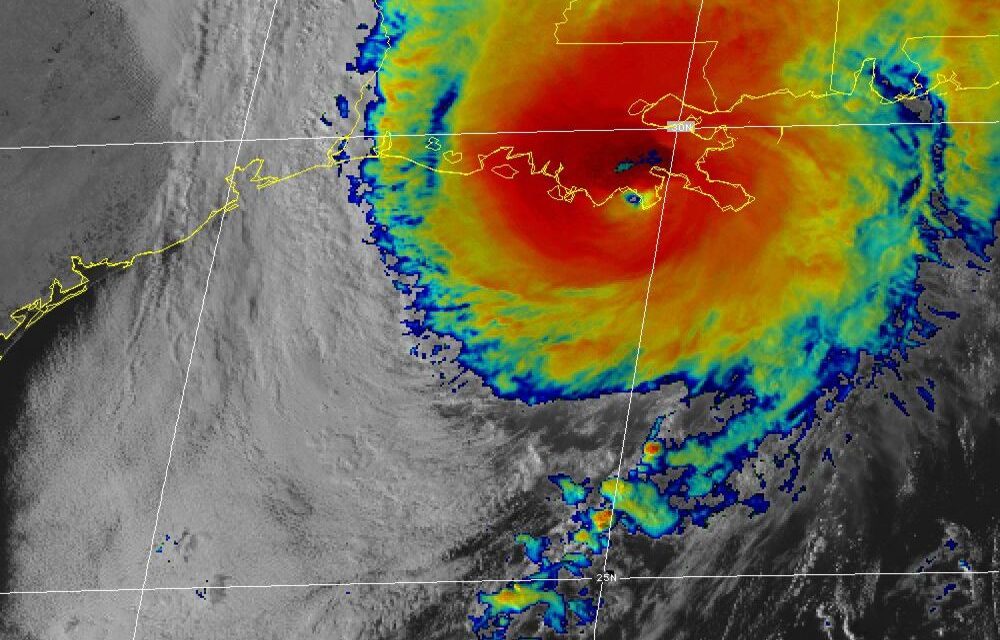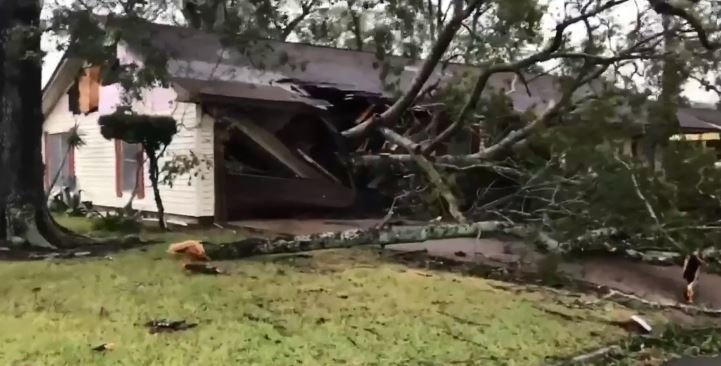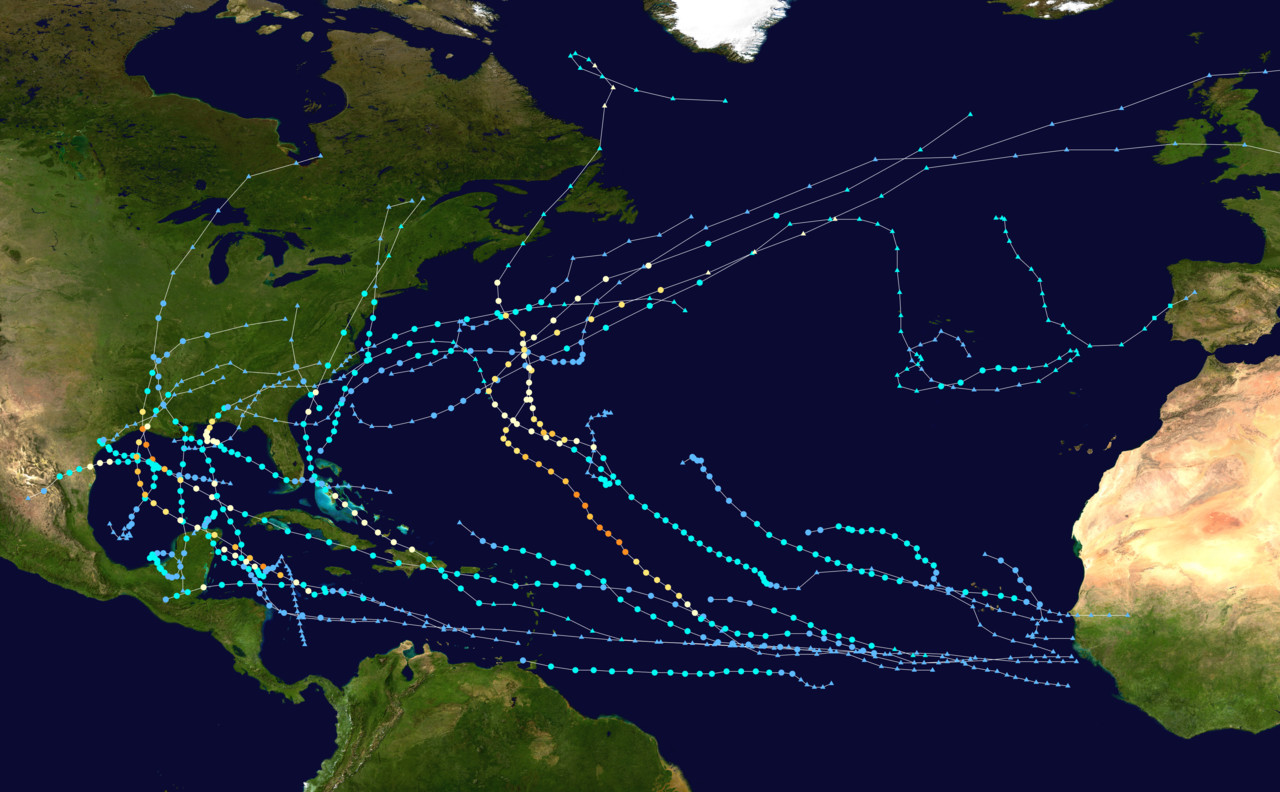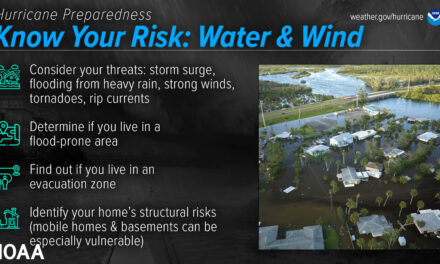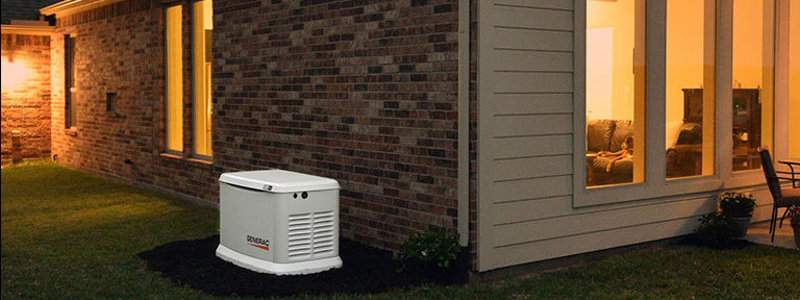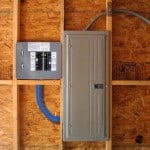Category 2 Hurricane Zeta as it makes landfall at Cocodrie, Louisiana. The hurricane was just 1 MPH from a Category 3 Major Hurricane on the Saffir Simpson Scale. GOES-East Satellite Imagery via NOAA October 28, 2020.
Zeta Makes Landfall as a Category 2 Hurricane Over the Mississippi Delta
Hurricane Zeta left a swath of death and destruction as it made landfall on the Central Gulf Coast, crossed the Southeast, and headed into the Mid Atlantic region. And though Zeta will move over the Atlantic Ocean later today, the effects will be felt by many for days and weeks to come with flooding and damage to a region already hit by 5 storms this year, including Category 4 Major Hurricane Laura, hurricanes Sally and Delta, and tropical storms Cristobal and Marco.
In its wake, Zeta left 2.6 million utility customers without power in Georgia, Louisiana. Alabama, and Mississippi with over 1 million in Georgia alone. After effects could include up to 10 inches of snow in some areas of the Northeast as the passing storm fuels another system with moisture.
How to Prepare for a Power Outage
A trough of low pressure that had no chance of formation on October 20 became Tropical Depression 28 west of Grand Cayman Island on October 24. On the morning of the 25th, the system further strengthened into Tropical Storm Zeta. It remained almost stationary for a day as it strengthened to hurricane status on the 26th.
Hurricane Zeta crossed the Yucatan Peninsula on October 27th with 80 MPH winds but weakened to a strong tropical storm before it emerged over the Gulf of Mexico. A new eye formed on October 28 as it raced across the Gulf. Hours ahead of landfall, it attained category 2 strength with a peak intensity of 110 MPH winds and a minimum pressure of 28.6 inches of mercury. As noted by NOAA Satellites on Twitter, 110 MPH is 1 MPH short of a Category 3 major hurricane. The NHC may review the winds and later upgrade the hurricane.
Stunning 20 hour time lapse of #HurricaneZeta accelerating towards landfall along the central Gulf coast -- steered by an impressively deep cut-off low advancing east across Texas and Oklahoma (and bringing wintery weather along with it). #GOESEast low-level water vapor imagery. pic.twitter.com/7tkKIfnCr8
— William Churchill (@ChurchillWx) October 29, 2020
Ahead of landfall, governors in Louisiana, Mississippi, and Alabama declared a state of emergency. At least five deaths are attributed to Hurricane Zeta including a man and his daughter killed when in a landslide hit their home in Jamaica. Downed electrical lines were blamed for a death in New Orleans. Another person drowned in Biloxi, Mississippi, while taking video of the storm at a marina. A tree that fell on a house in Georgia took yet another life.
Things to Remember When Disaster Threatens
Zeta moved very fast across the Gulf and gained speed as it neared Louisiana. It made landfall at approximately 4:00 PM CDT at Cocodrie. Over land, it began to weaken but remained well organized and retained hurricane strength into central Alabama until 1:00 AM CDT on the 29th—9 hours over land as a hurricane.
The fast-moving system retained tropical storm characteristics with the associated wind field and heavy rain across Alabama, northwest Georgia, and skirted the border between Tennessee and North Carolina. Still moving fast, it began to lose tropical characteristics and became a post-tropical storm at 2 PM EDT on October 29 over central Virginia with 50 MPH sustained winds. Zeta should move over the Atlantic this afternoon or evening, October 29.
Only once in previous history has the list of names for tropical storms and hurricanes been exhausted. 2005 had 31 tropical cyclones, 27 named storms, 15 hurricanes, and 7 major hurricanes.
Zeta Rips the Roof off a Home
Hurricane #ZETA’s powerful gusts rip a roof of a home in Chalmette, LA.
— Dylan Federico (@DylanFedericoWX) October 29, 2020
???? Taylor Blanchard #lawx @DavidBernardTV @NWSNewOrleans @spann @StormHour pic.twitter.com/WIj2S3239m
Two Months Left to the Record Breaking 2020 Hurricane Season
This Map shows all the tropical cyclones of the 2020 Hurricane Season. The color of the dots shows the storm strength with from light blue (tropical depression) to dark orange or red (major hurricane). The dot type indicates the type of storm. Tropical depression, tropical storm, hurricane.
The Atlantic Hurricane Season runs from June 1 to November 30. The six-month period covers the time when tropical cyclones are most likely to form in the Atlantic Basin, which includes the Atlantic Ocean, the Gulf of Mexico, and the Caribbean Sea. Tropical cyclones can form at any time of year and no month is off limits. In 2005, Tropical Storm Zeta formed on December 30 and dissipated on January 7, 2006. Hurricane Alice 1954 formed on December 30 and dissipated on January 6th.
Best Natural Gas Generators for Hurricane Power Outages
The 2020 Hurricane Season set new records with every tropical cyclone starting with Tropical Storm Cristobal, the first storm to hit Louisiana this year. Cristobal remained a Tropical Depression as it headed north and did not lose tropical characteristics until it reached the Midwest, but its strength did not dissipate until it crossed Lake Superior, Canada, and finally dissipated after crossing the Hudson Bay.
Each storm beginning with Cristobal set a new record for the earliest named storm. The earliest the third storm of any season formed prior to Cristobal was June 5. Cristobal formed out of a remnant of Tropical Storm Amanda (Pacific Ocean) that crossed from the Pacific Ocean into the Bay of Campeche (Atlantic—Caribbean Sea) and organized into Tropical Depression 3.
24kW Generac Guardian Most Powerful Generator in its Class
Tropical cyclones developed at an unprecedented rate during the 2020 Hurricane Season. Historically, 2005 was the only hurricane season on record to exhaust all the names on the Atlantic Hurricane list of names for that year. Hurricane Wilma 2005 formed on October 15, after which the names of letters in the Greek Alphabet were used. On September 18th, 2020, nearly a month earlier than in the 2005 season and just shortly after the season peak, Tropical Storm Wilfred became the earliest 21st named storm in history. Currently, we are still more than a month away the end of the season and poised to set a new record for named storms.
Watch: Zeta Strengthens Crossing Gulf of Mexico
Extraordinary for so late in the #hurricane season in this location -- the rapid intensification of #Zeta over the Gulf of Mexico from the Yucatan to landfall in Louisiana pic.twitter.com/HdDEvPW7Av
— Stu Ostro (@StuOstro) October 28, 2020
Three #Storms in the #atlanticocean #HurricaneSeasonhttps://t.co/AGIq4v9Lm0 pic.twitter.com/DDuGeilNeI
— Norwall PowerSystems (@NorwallPowerSys) September 21, 2020

